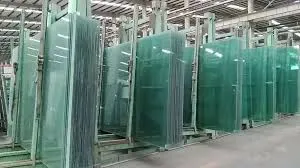The Price of Architectural Glass Factors and Trends
Architectural glass plays a pivotal role in modern building design, merging aesthetics with functionality. Its versatile application ranges from facades and windows to interior partitions, providing natural light, thermal insulation, and sound attenuation. As the demand for innovative architectural solutions grows, understanding the pricing dynamics of architectural glass is essential for architects, builders, and investors. This article delves into the key factors influencing architectural glass prices and current market trends.
Factors Influencing Architectural Glass Prices
1. Type of Glass
Architectural glass comes in various forms, including tempered, laminated, insulating, and low-emissivity (Low-E) glass. Each type offers distinct benefits and costs. For example, tempered glass, known for its strength and safety, is typically more expensive than standard float glass due to the complex manufacturing process. Laminated glass, which includes a layer of plastic for added security, also incurs higher costs.
2. Thickness and Dimensions
The thickness of glass panels significantly impacts pricing. Thicker glass not only enhances durability but also increases the price per square foot. Additionally, custom sizes and oversized panels require specialized fabrication, leading to higher costs. Buyers must balance their design requirements with budget constraints when selecting glass dimensions.
3. Surface Treatments and Coatings
Architectural glass can be treated with various coatings, such as reflective, anti-reflective, and solar control coatings, which manage heat and light penetration. While these enhancements improve energy efficiency and comfort, they also add to production costs. The choice of coating, therefore, not only influences the functionality of the glass but also its overall price.
4. Market Demand and Supply Chain
The architectural glass market is influenced by broader economic conditions. During construction booms, demand for architectural glass spikes, potentially driving up prices. Conversely, during economic downturns, excess supply can lead to price reductions. Moreover, disruptions in the supply chain, such as raw material shortages or transportation issues, can also affect pricing stability.
architectural glass price
5. Regional Variations
Glass prices can vary significantly based on location. Regions with high construction activity may experience inflated prices due to demand, while areas with less activity may have lower prices. Additionally, regional regulations and import duties on glass products can affect overall costs, making it critical for buyers to consider these geographical factors.
Current Market Trends
As of 2023, several trends are shaping the architectural glass market. One notable trend is the increasing focus on sustainability. Architects and builders are increasingly opting for glass that meets green building standards. This includes low-E glass, which significantly reduces energy costs by minimizing heat transfer. As environmental concerns rise, the demand for sustainable glass solutions is likely to influence pricing.
Moreover, technological advancements in glass manufacturing are opening new doors for innovation. Smart glass, which can change its properties based on environmental conditions, is gaining traction. While initially more expensive, the long-term energy savings could justify the investment. As production methods evolve, these technologies may become more accessible, potentially impacting their market prices.
Finally, post-pandemic construction projects are driving a surge in demand for architectural glass, particularly as commercial and residential spaces adapt to new norms. The need for larger windows and glass partitions, which enhance natural light and promote a sense of openness, is contributing to an uptick in orders. Thus, the dynamics of architectural glass pricing remain closely tied to market trends and societal needs.
Conclusion
In conclusion, the price of architectural glass is influenced by a multitude of factors ranging from its type and dimensions to market demand and regional dynamics. As trends evolve towards sustainability and technological innovation, the architectural glass market will continue to experience fluctuations in pricing. Understanding these factors is essential for stakeholders in the construction industry to make informed decisions and optimize their investments in architectural glass solutions.
 Afrikaans
Afrikaans  Albanian
Albanian  Amharic
Amharic  Arabic
Arabic  Armenian
Armenian  Azerbaijani
Azerbaijani  Basque
Basque  Belarusian
Belarusian  Bengali
Bengali  Bosnian
Bosnian  Bulgarian
Bulgarian  Catalan
Catalan  Cebuano
Cebuano  Corsican
Corsican  Croatian
Croatian  Czech
Czech  Danish
Danish  Dutch
Dutch  English
English  Esperanto
Esperanto  Estonian
Estonian  Finnish
Finnish  French
French  Frisian
Frisian  Galician
Galician  Georgian
Georgian  German
German  Greek
Greek  Gujarati
Gujarati  Haitian Creole
Haitian Creole  hausa
hausa  hawaiian
hawaiian  Hebrew
Hebrew  Hindi
Hindi  Miao
Miao  Hungarian
Hungarian  Icelandic
Icelandic  igbo
igbo  Indonesian
Indonesian  irish
irish  Italian
Italian  Japanese
Japanese  Javanese
Javanese  Kannada
Kannada  kazakh
kazakh  Khmer
Khmer  Rwandese
Rwandese  Korean
Korean  Kurdish
Kurdish  Kyrgyz
Kyrgyz  Lao
Lao  Latin
Latin  Latvian
Latvian  Lithuanian
Lithuanian  Luxembourgish
Luxembourgish  Macedonian
Macedonian  Malgashi
Malgashi  Malay
Malay  Malayalam
Malayalam  Maltese
Maltese  Maori
Maori  Marathi
Marathi  Mongolian
Mongolian  Myanmar
Myanmar  Nepali
Nepali  Norwegian
Norwegian  Norwegian
Norwegian  Occitan
Occitan  Pashto
Pashto  Persian
Persian  Polish
Polish  Portuguese
Portuguese  Punjabi
Punjabi  Romanian
Romanian  Russian
Russian  Samoan
Samoan  Scottish Gaelic
Scottish Gaelic  Serbian
Serbian  Sesotho
Sesotho  Shona
Shona  Sindhi
Sindhi  Sinhala
Sinhala  Slovak
Slovak  Slovenian
Slovenian  Somali
Somali  Spanish
Spanish  Sundanese
Sundanese  Swahili
Swahili  Swedish
Swedish  Tagalog
Tagalog  Tajik
Tajik  Tamil
Tamil  Tatar
Tatar  Telugu
Telugu  Thai
Thai  Turkish
Turkish  Turkmen
Turkmen  Ukrainian
Ukrainian  Urdu
Urdu  Uighur
Uighur  Uzbek
Uzbek  Vietnamese
Vietnamese  Welsh
Welsh  Bantu
Bantu  Yiddish
Yiddish  Yoruba
Yoruba  Zulu
Zulu 

